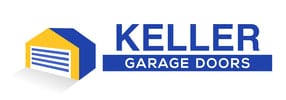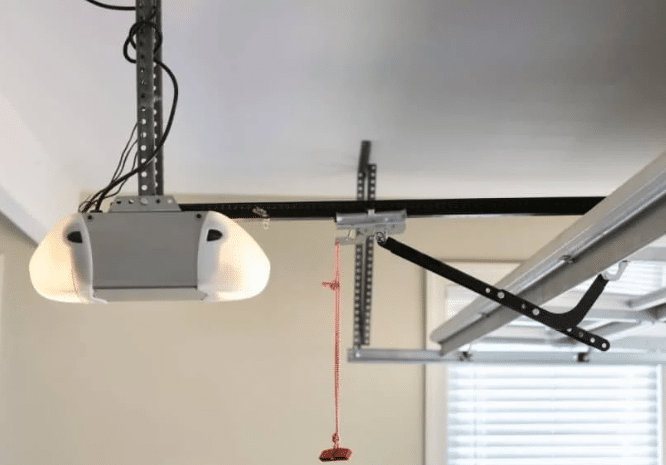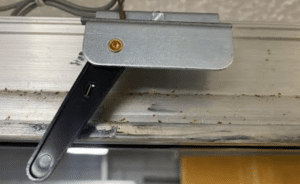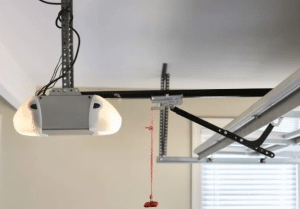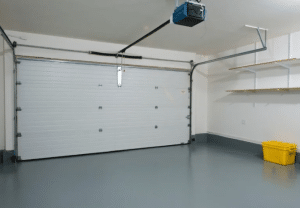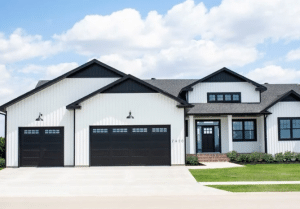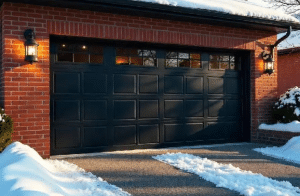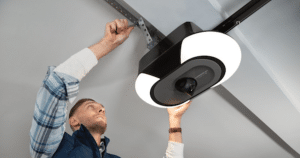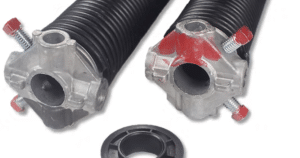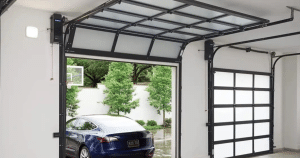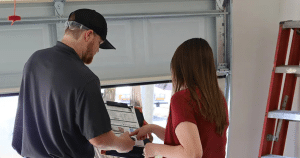Everything you need in one list—essential parts for a garage door opener and how each part supports performance.
A properly functioning garage door opener is crucial to the safety, security, and convenience of any home or commercial building. Over time, wear and tear or unexpected breakdowns can make replacement parts necessary. Knowing the essential parts for a garage door opener will help homeowners and property managers maintain their systems without unnecessary delays or costly service interruptions.
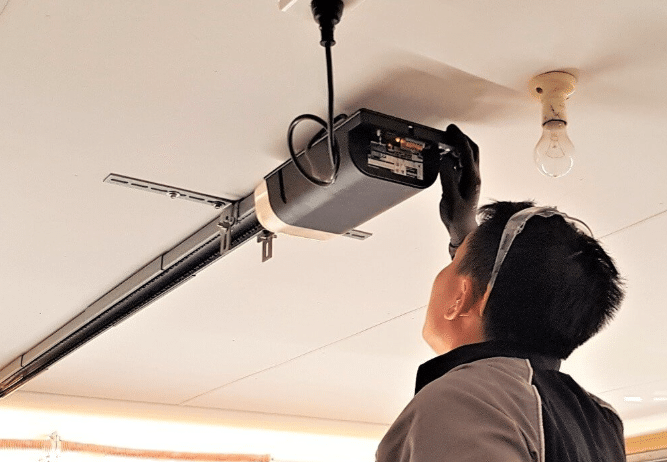
Whether you’re troubleshooting a faulty unit or upgrading an old opener, understanding the different components involved in the system is key. Garage door openers are more than just motors. They’re a combination of interconnected parts that must work in harmony. Each part, no matter how small, contributes to the functionality and longevity of the entire mechanism.
This comprehensive guide breaks down the must-have parts for a garage door opener. We’ll cover everything from essential electrical components to supporting hardware and backup accessories. With this information, you can make informed decisions about repairs or replacements and keep your system running at peak performance.
Motor Assembly: The Core of All Parts for a Garage Door Opener
The motor is the heart of every garage door opener system. It’s the component responsible for driving the trolley that opens and closes the door. Without it, your opener wouldn’t function at all. Motors are usually rated by horsepower, ranging from 1/3 HP to 1 1/4 HP, depending on door weight and usage.
Key subcomponents include the motor cover, brushes, wiring, and motor shaft. Some modern motors also integrate smart technology and sensors for improved safety and functionality. Keeping the motor clean and replacing faulty internal components when needed ensures smoother operation and prevents premature failure.
Drive Mechanism: Chains, Belts, and Screws that Matter
The drive mechanism is a core part of any garage door opener system. It’s responsible for transferring the motor’s power to open and close the garage door. There are three main types of drive mechanisms, each with its components, advantages, and maintenance requirements.
Chain Drive Systems
Chain drives are one of the most common and affordable types of garage door openers. They use a metal chain to move the trolley along the rail, raising and lowering the door.
Key components include:
- Metal drive chain
- Sprockets (to transfer motion from the motor)
- Chain tensioner
- Rail and trolley assembly
Chain drives are durable and reliable but tend to be noisier, making them ideal for detached garages or properties where noise isn’t a concern.
Belt Drive Systems
Belt drive openers use a reinforced rubber or polyurethane belt instead of a metal chain, offering smoother and quieter operation—ideal for attached garages or homes with living space above the garage.
Key components include:
- Reinforced drive belt
- Pulleys
- Rail and trolley system
- Motor unit with belt tension system
Due to their quiet operation, belt drive systems are often preferred in residential areas. They may require more frequent inspection to maintain belt tension and ensure smooth travel.
Screw Drive Systems
Screw drive systems operate using a long, threaded steel rod that rotates to move the trolley. This design features fewer moving parts and is well-suited for climates with consistent temperatures.
Key components include:
- Threaded steel drive rod
- Carriage (trolley mechanism)
- Guide rail
- Motor assembly with coupling
Screw drives are powerful and efficient but can be sensitive to extreme temperature fluctuations. They generally require more frequent lubrication to prevent binding and wear.
Maintenance Tip: Keep It Moving Smoothly
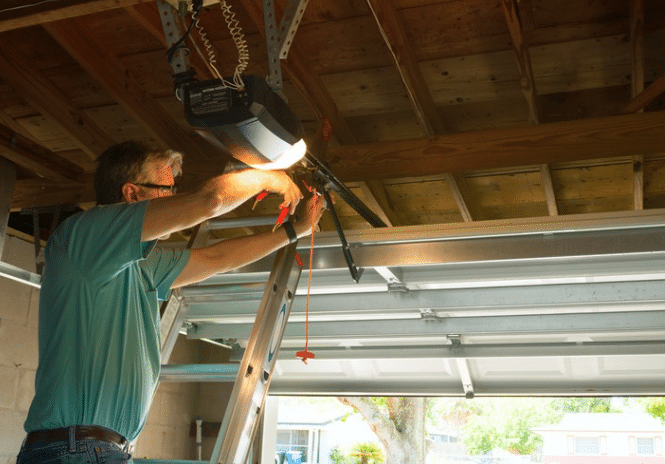
Regardless of the drive type, regular maintenance helps ensure long-lasting performance. Inspect moving parts for signs of wear, and apply a manufacturer-approved lubricant to reduce friction and noise. Proper care reduces strain on the motor and extends the life of the opener system.
Rail and Trolley Assembly: Critical to Smooth Door Movement
The rail guides the trolley as it moves the door up and down. This track must be aligned perfectly for efficient operation. Alongside the rail is the trolley, which attaches to the door arm.
Important components include:
- Trolley carriage
- Rail assembly
- Door arm bracket
- Travel limits switch
Wear in the rail or a damaged trolley can cause the opener to stall, jerk, or fail to open/close completely.
Safety Sensors and Wiring: Essential for Modern Garage Door Openers
Federal regulations require all residential garage door openers to include photoelectric safety sensors. These sensors prevent the door from closing if an obstruction is detected. They’re installed near the floor on both sides of the door.
Key parts for this system:
- Infrared photo-eye sensors
- Sensor brackets and lenses
- Wiring harness
- Alignment indicators
These parts must be clean, properly aligned, and connected to ensure safety compliance and functionality.
Remote Controls, Wall Consoles, and Keypads
Access control components play a major role in user convenience and security. Over time, these can malfunction due to battery issues, signal interference, or internal wear.
Important parts to consider:
- Remote controls (transmitters)
- Wall-mounted consoles
- Wireless keypads
- Circuit boards and batteries
Some modern systems offer smartphone control through Wi-Fi-enabled consoles, which may require additional parts like gateways or hubs.
Logic Board and Circuit Board: The Brain of the Operation
The logic board (also known as the circuit board) is the central controller that communicates with remotes, sensors, and the motor. It’s responsible for interpreting input signals and initiating appropriate commands.
Essential logic board components:
- Control wiring
- Transformer
- Relays and capacitors
- Programming interface
Failure of this component often results in unpredictable operation, unresponsiveness, or total system failure. Replacement is sometimes more cost-effective than repair.
Emergency Release and Backup Systems
In the event of a power outage or malfunction, manual operation is essential. Every opener includes an emergency release feature that disengages the trolley from the motor.
Must-have manual components:
- Emergency pull cord and handle
- Locking mechanism
- Backup battery system
Backup batteries are especially critical in areas prone to power outages, ensuring uninterrupted access.
Mounting Brackets, Fasteners, and Supporting Hardware
Though small in size, mounting brackets and fasteners play a crucial role in the overall stability and safety of your garage door system. These supporting components keep the opener securely attached and ensure smooth, quiet operation.
Why These Parts Matter
Mounting hardware holds the entire opener system in place. If any part becomes loose, misaligned, or worn, it can lead to excessive vibrations, noisy operation, or even structural failure over time. Regularly inspecting and tightening these components is an essential part of garage door maintenance.
Key Components to Check
- Mounting brackets
These secure the opener unit to the ceiling or wall. They must remain tightly fastened and properly aligned. - Lag screws
Heavy-duty fasteners are used to anchor brackets into wall studs or ceiling joists. They must be tight and free from corrosion. - Ceiling straps or angle iron supports
These provide added stability, especially for heavier or older openers. Check for bending, rust, or fatigue. - Vibration isolators
Often made of rubber or neoprene, these reduce the amount of noise and movement transmitted to the structure. Worn isolators can lead to rattling or loud operation.
Signs of Trouble
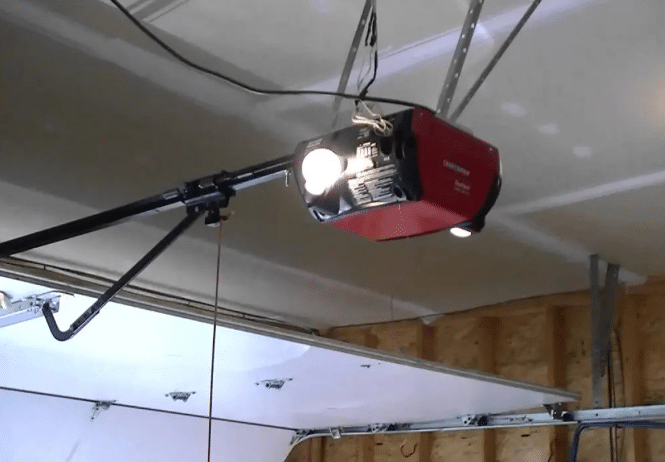
Loose or deteriorating hardware can cause the opener to wobble or make unusual noises. You may also notice sagging rails or a misaligned door arm. If left unaddressed, this can lead to premature wear on the opener or even structural damage.
Maintenance Tip
During routine inspections, use a socket wrench to check the tightness of all bolts and lag screws. Replace any rusted or stripped fasteners immediately. Adding or upgrading vibration isolators can also improve noise control and protect surrounding materials.
Frequently Asked Questions
What are the most common parts that need replacing in a garage door opener?
Common parts that often require replacement include remote controls, safety sensors, belts or chains, circuit boards, and trolley carriages. Regular maintenance can delay the need for replacements.
Can I buy individual parts for a garage door opener, or do I need to replace the whole unit?
Yes, many individual parts for a garage door opener are available for purchase. This includes motors, belts, sensors, and logic boards. Only severely outdated or damaged systems typically require full replacement.
How do I know which garage door opener parts are compatible with my system?
Check the model number of your opener and consult the manufacturer’s manual or website. Compatibility depends on the brand, drive type, and generation of the opener.
Are universal parts for garage door openers reliable?
Universal parts such as remotes, keypads, and sensors can be reliable when purchased from reputable brands. However, exact-match parts are often preferred for better performance and warranty compatibility.
What safety parts are legally required in a garage door opener system?
Federal law mandates photo-eye sensors that detect obstructions. Emergency release cords are also a standard requirement to ensure manual operation during power failures.
Conclusion
Knowing the essential parts for a garage door opener empowers homeowners and property managers to maintain safe and efficient systems. From the drive mechanism to the logic board and safety sensors, each component plays a crucial role in proper functionality.
Routine inspections and timely replacement of worn parts ensure long-term reliability. By understanding how these parts work together, you can avoid unnecessary breakdowns and reduce maintenance costs.
If you’re looking for expert help or quality parts in Keller, TX, trust the experienced team at Keller Garage Doors. We’re here to ensure your garage door system operates seamlessly, with trusted service and genuine parts.
End Note
Keller Garage Doors is your go-to source for all things related to garage doors. Our team specializes in garage door service, ensuring that your opener and door components work together with efficiency and reliability.
From precise garage door repairs to complete garage door replacement solutions, we handle every project with professionalism. We also offer trusted emergency garage door service so you’re never left stuck.
Whether you’re working with residential garage doors or need high-performance commercial garage doors, our team provides unmatched expertise. We proudly serve Keller and surrounding areas, including Fort Worth and Colleyville. Learn more about us, read our latest blog updates, or contact us to schedule service.
Keller TX Garage Door
1145 Bancroft Rd, Keller, TX 76248, United States
+18176972922
